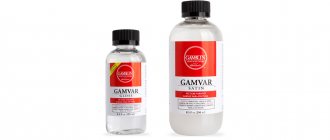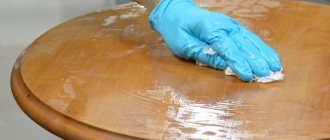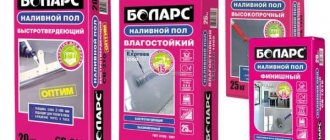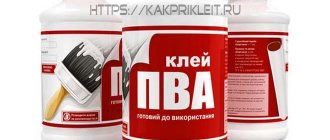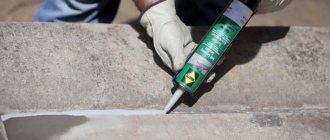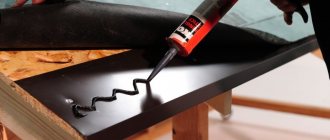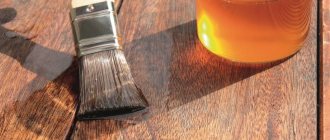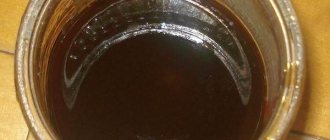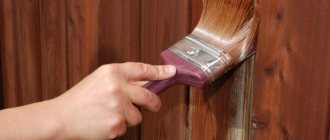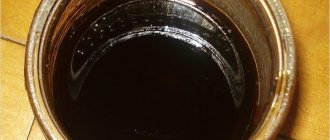Drying oil is used to impregnate various types of surfaces; it can serve as a primer, because wood always requires additional protection, then it will last longer and maintain its beautiful appearance. Painting with drying oil is not difficult to do, but it takes a long time to dry completely. To correctly calculate the time for finishing work, you need to know how long it takes for drying oil to dry. The factors influencing this process will be discussed in more detail below.
How long does it take for drying oil to dry on wood or chipboard?
When working with wood and many other porous surfaces, one of the most commonly used materials is drying oil. We apply it as a primer or for other reasons. But those of you who have come across this product at least a few times know that it has a long drying time, and that work cannot be continued until this drying is complete.
Further reading[edit]
- "Auto-oxidation". McGraw Hill Encyclopedia. 8th ed. 1997
- Friedman, Ann et al. "The Painting." www.worldbookonline.com. 2006. 46 Stetson St. #5 Brookline, MA. May 10, 2006
- "The History of Oil Paint." www.cyberlipid.org. May 5, 2006 < https://web.archive.org/web/20090916174446/https://www.cyberlipid.org/perox/oxid0011.htm >
- van den Berg, Jorit J. "Mobile and Stationary Phases in Traditional Aged Oil Paint." www.amolf.nl 2002. MOLART. May 8, 2006
- Andes, Louis Edgar, drying oils, boiled oil, solid and liquid drying agents. London: Scott, Greenwood and Co., 1901.
What is drying oil and why is it needed?
The basis for the olive is overheated and specially oxidized vegetable oil. At the same time, various driers, solvents and other components characteristic of paint and varnish products are added there.
The main task of drying oil is to form a protective layer on the surface of the wood to prevent the penetration of moisture, mold, mildew, rot and insects. Finally, this material is used as a primer, allowing the paint to go on more smoothly and efficiently, and also reducing the consumption of this paint itself.
Do not forget that wood coated with linseed oil is very beautiful, so this paint coating is also used for decorative purposes.
Additional Information
Drying oil can be used for priming not only wooden walls, but also plastered ones. It is also often used as an anti-corrosion coating for metals.
Natural drying oil. It consists of 95% vegetable oil, and only 5% of drier, a special additive that accelerates the drying of the treated surface.
It is unprofitable to use it for treating external surfaces due to the high financial costs, while this species does not provide 100% protection against fungus and insects.
Natural drying oil is used to dilute oil paints and prime wooden surfaces before painting or varnishing.
Oxol. It consists of 55% natural oil component, 40% solvent, white spirit, and 5% drier. The scope and properties of this type of drying oil are the same as natural ones, only it dries faster and costs less.
It also does not provide 100% protection. Learn more about why Oxol drying oil is needed and what it consists of in the video:
Composite drying oil is made entirely from artificial chemical components, in particular petroleum-polymer resins, and has a pungent odor.
Drying oils based on alkyd resins are considered the best. They are not as greasy and expensive as natural drying oils, and not as toxic as composite ones. But, nevertheless, it is better to use them for finishing outdoor country buildings (porch, swing, gazebo, summer kitchen) and for the interior rooms of country houses and apartments.
Drying oil is a good alternative to modern expensive means for impregnating and priming wooden surfaces.
But remember that some types can be toxic and are not suitable for use in residential areas.
If you need guaranteed protection from external factors, drying oil alone is not enough.
Why do you need drying oil for wood, if today there are a large number of other means for coating wooden surfaces? Drying oil is a traditional paint and varnish material that is widely used in construction and painting work. Since Soviet times, almost all wood has been treated only with this oily product due to its high qualities and low price.
Drying oils can be used as independent protection for wooden products, as a decorative dark coating, as a regular primer before finishing painting or filling untreated wooden surfaces, and as an additive for the preparation of various paint and varnish compositions.
Modern compositions are divided into several groups:
Types of drying oil
The drying time of drying oil on a wooden surface or chipboard depends on the type of product. There are four options on the market today:
Natural drying oil, unlike its synthetic “brothers,” is not a fire hazard, since it contains almost no solvents. However, the drying time depends on the type of oil. The product dries on linseed and hemp oil for 24 hours, but sunflower oil will still be sticky at this point
Semi-natural drying oil contains approximately 45 percent solvents. Like natural, it is used not only for coating wood, but also for diluting paint and varnish products. However, the semi-natural option is not used for flooring. Drying time is approximately 24 hours.
Synthetic drying oil is the cheapest. It is obtained by oxidizing shale oil followed by dissolution in xyol. Unlike all the others, it is not used for treating household surfaces. Requires room ventilation. Its scope of application includes priming concrete, metal, diluting paint and varnish products, preparing plaster and mastic. Drying time is usually more than 24 hours
The combined drying oil dries in about a day. It is obtained by polymerization and dehydration of oils. It is not used for coating surfaces - it is used in paint production.
Video description
From the video you can find out how the temperature of impregnation affects the depth of penetration using linseed oil as an example: To determine the naturalness of the material, it is enough to take a closer look at the transparency and color. Real products always have a tint. Additionally, you need to familiarize yourself with the certificates (conformity, hygienic for Oxol) and production regulations (GOST, TU).
In the case of preparing silverfish in drying oil, you must understand that the heat resistance of aluminum will be reduced to nothing. If drying oil from a synthetic group is used, then you should give preference to slate, which forms a weather-resistant film.
No sediment – drying oil quality Source obi.ru
It is better to treat expensive types of wood with natural drying oil. Fences can be impregnated with Oxol or a combined composition. When choosing drying oil, it is easier to evaluate it when it is in a transparent container - it is easier to see the presence of sediment. If it is available, then the quality of the product is low.
How to speed up the drying process of drying oil on a wooden surface or chipboard
Unlike paint, which dries after the solvent evaporates, drying oil dries through the process of oxidation, that is, by contacting oxygen.
Many people ask what to do if the drying oil does not dry out. In reality, you almost always have to wait, and there aren't many ways to speed up the process. One of them is to use a heat gun. The thing is that the drying process of drying oil accelerates under conditions of high temperature and low humidity. And the fan heater does this job very well. By the way, previously it was practiced to apply drying oil hot just to increase the drying speed.
Another way is to use a drier. Red lead is ideal. Please read the instructions carefully before use.
Links[edit]
- Ulrich Pot (2002). "Drying oils and related products." Ullman Encyclopedia of Industrial Chemistry
. Weinheim: Wiley-VCH. DOI: 10.1002/14356007.a09_055. - Ned A. Porter, Sarah E. Caldwell, Karen A. Mills "Mechanisms of free radical oxidation of unsaturated lipids" Lipids 1995, volume 30, pages 277-290. DOI: 10.1007/BF02536034
- ^ ab Applications, E. A. (1958). Printing ink technology
. London: Leonard Hill [Books] Limited. clause 14.
How to dry drying oil?
Apply drying oil to the surface of a metal barrel. The barrel has been sitting in a warm (+15 degrees) garage for a week and smells very strongly. How can you dry it faster? Is there a way to fit it into the day? If not, is it possible to dry it outside (currently the temperature is about 0)?
I wouldn’t like to upset you, but there is very little chance that the drying oil will dry out.
True, “Ansol” dries very quickly, a day maximum, which means you have two in one and the drying oil is not drying oil, and even stitched.
The first option is to try drying it with a hair dryer (a regular one won’t work), direct the stream of hot air as if casually, so that the flow of hot air seems to “fit” your barrel.
If nothing helps, then there are no options to dry it at all; the drying oil just needs to be removed from the surface.
Drying oil can be removed with gasoline, White Spirit, or even better, Solvent, a solvent for oil paints.
The procedure is not complicated, moisten a large rag with the products that I listed above (one of them, of course), then take a break for about forty minutes, then repeat the procedure, thus very quickly removing the drying oil from the barrel (You are writing about a whole day of work, that’s enough here several hours).
First, decide what kind of drying oil you have.
All drying oils can be roughly divided into three types:
Depending on what kind of drying oil you have and on the basis of what material it is made from, the time it will take to dry will depend.
Let's say natural oil drying oils made from linseed or hemp oil dry quickly (about 1-3 days), but drying oils based on sunflower, poppy, and nut oils dry much more slowly.
Drying oils based on olive and rapeseed oils cannot dry out at all, although they can thicken on the surface when applied in a thin layer.
But drying oil based on castor oil will not even thicken.
In your case, it is very likely that you used composite drying oil; they are usually quite toxic and take a very long time to dry; they smell and release toxic substances; they can last for several years after they have been applied to the surface.
The thicker the layer of this drying oil, the slower it dries, and if a layer is applied too thick, it may not dry at all, but only thicken.
In my personal practice, there was a case when drying oil applied to a wooden surface did not dry for 5 years, after 5 years I decided to cover it with another layer of another drying oil, only then did it thicken, but did not dry out and remained soft.
But judging by your description, your drying oil will not thicken either at zero temperature or at + 15 degrees, the reason could be either a thick layer of drying oil, or the use of drying oil that does not actually dry out.
Try placing a heater next to it, but keep the temperature no more than 25-30 degrees, otherwise the drying oil will float and begin to drain. If the drying oil does not dry, then one of the possible options is to wash off the drying oil and apply another one, since there is an option that it will never dry out.
In general, in my opinion, coating metal is not a very good option, but if you decide to use it, then it’s probably best to take “oxol” and precisely the “B” marking, it is more stable.
Source
Drying surfaces after treating the combined solution
Drying of the composition occurs depending on the class of the product and surface. Typically, the surface hardening time takes from 6 to 36 hours; if the process is delayed, this indicates the quality of the drying oil, or the painting was carried out incorrectly. Then you should try the following steps:
- Clean the paint with white spirit.
- Remove the top layer of wood.
- Paint the top with paints intended for exterior use. Experts advise covering sticky areas with a brush and acetone.
- Remove the layer with a solvent or scrape it off. And then paint it again.
If removal is difficult, then the product is old and it is better to buy new material.
Experts advise covering sticky areas with a brush and acetone.
Drying oil has a number of positive qualities, which has made it in demand for many years, but only high-quality compositions have them. To avoid having to remove bad coating, be careful when choosing products. Check the certificates of conformity in the store, and then the coating will turn out smooth and beautiful.
How to speed up the drying of drying oil on the surface of wood?
We make a balcony and cover it with wood. We covered it with drying oil, we've been waiting for 10 hours, but it's still sticking. How to speed up the drying of drying oil?
Covered with linseed oil, we've been waiting for 10 hours
10 o'clock, that's half way.
Read the packaging for the drying oil, it should say what kind of driers are added to it, if they are polymetallic, then this is very good, thanks to them the drying time of the drying oil is significantly accelerated.
Any drying oil dries in about 24 hours.
But that’s not all, the temperature should not be lower than +18 degrees, humidity also affects the drying speed of the drying oil.
But do not rush to add drying agents to the drying oil (I mean the one that is still in the container and not on the surface).
2-3% is quite enough, an excessive amount of driers can even increase the drying time of the drying oil.
First, wait a day, because only 10 hours have passed.
And then create the necessary conditions for drying oil to dry.
Your task is to lower the humidity, if necessary, and also, if necessary, increase the temperature.
That's all, heat guns or ordinary heaters with a fan can handle this task,
There are simply no other options; driers are introduced at the stage of preparing drying oil.
Everything that I described applies to any drying oil, but only high-quality one; I have encountered “left-handed” homemade drying oil without any driers at all.
I had to wash it off and buy a normal (quality) one.
Source
Tips for use
Drying time is reduced when choosing solutions with the addition of polymetallic driers. Natural linen material will dry in 20 hours when mixed with lead, and if manganese is added, this period will be reduced to 12 hours. By consuming a combination of both metals, the wait can be reduced to 8 hours. Even with the same type of drier, the actual temperature is of great importance.
When the air warms up to more than 25 degrees, the drying rate of drying oil with cobalt additives doubles, and with manganese additives sometimes triples. But humidity above 70% sharply increases the drying time.
In some cases, users are not interested in applying drying oil, but, on the contrary, in an effective way to get rid of it. Such material is removed from wooden surfaces using gasoline, which is rubbed onto the desired area. Wait 20 minutes and the oil will collect on the surface. This technique will only help against the surface layer; the absorbed liquid can no longer be removed out. A substitute for gasoline can be considered white spirit, the smell of which is slightly better, and the principle of operation is similar.
It is acceptable to use paint thinner, but not acetone, because it will not work. Drying oil and stain should not be confused; the role of the latter is purely decorative and has no protective properties.
Getting rid of the smell in the apartment is very important for a large number of users making repairs. As soon as furniture is placed in the kitchen or finishing work is carried out, this unpleasant smell begins to haunt the residents for several weeks or even months.
Therefore, after treatment, you need to ventilate the room for at least 72 hours, preferably even at night. The room itself must be hermetically sealed to remove unwanted “aroma.”
Then the newspapers are burned. It’s better not even to burn them in a fire, but to slowly smolder, because it produces more smoke. Collected smoke should not be ventilated for at least 30 minutes. This should not be done if varnish has been applied.
Without fire, you can get rid of the smell of drying oil using water: several containers with it are placed in the room and changed every 2-3 hours; the unpleasant odor will be eliminated on the second or third day. Place salt next to surfaces finished with drying oil and change it daily; freshness will come on the third or fifth day.
Many people are interested in the question of whether it is possible to apply varnish over drying oil or not. Both types of materials form a film. When the varnish applied to fresh drying oil dries, air bubbles form. NTs-132 dyes and some other paints are compatible with this impregnation. It is unacceptable to apply the coating at sub-zero temperatures; moreover, oxol is applied at temperatures of at least +10 degrees.
Tile adhesive (waterproof) is made from 0.1 kg of wood glue and 35 g of drying oil. Drying oil is added to the melted glue and mixed thoroughly. During subsequent use, the finished mixture must be heated; it will be useful not only for tiles, but also for joining wooden surfaces.

